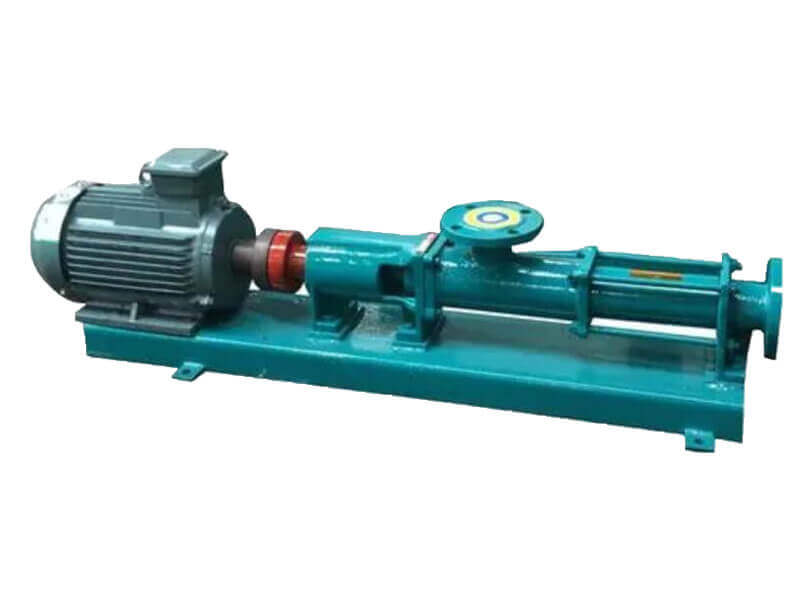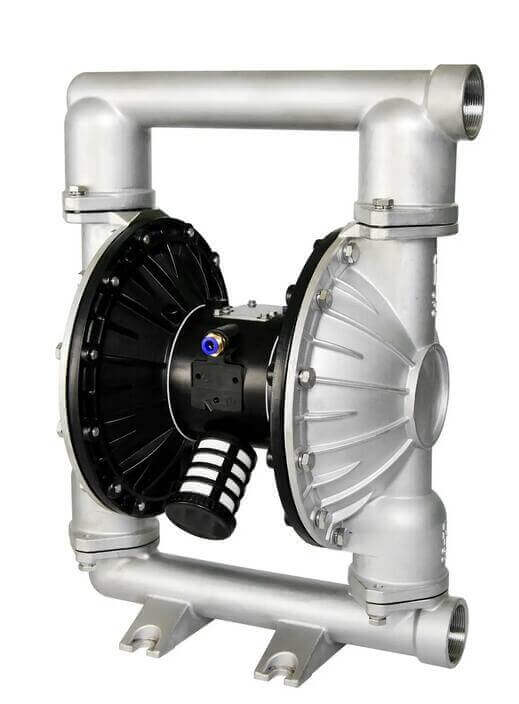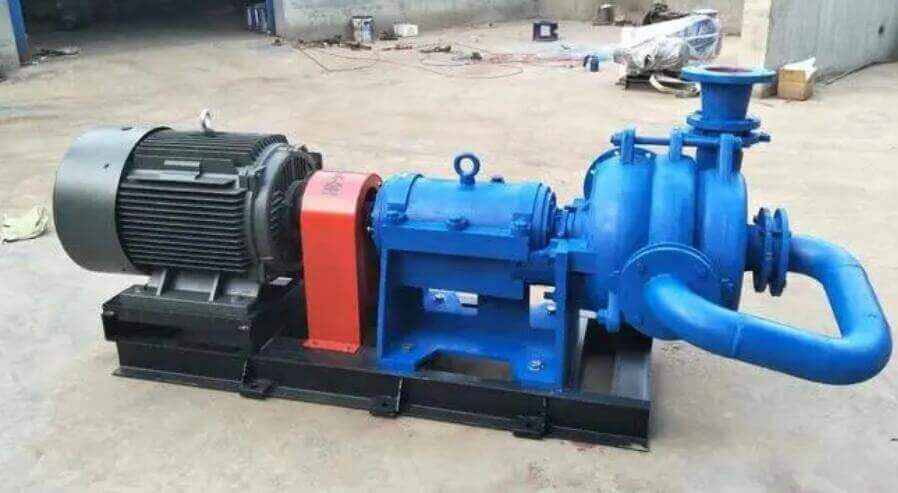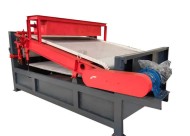The filter press feed pump is specifically designed to handle the feeding and pressurization of slurry or sludge into a filter press. A filter press is a piece of equipment used for solid-liquid separation, often in industries such as wastewater treatment, mining, chemical, pharmaceuticals, and food processing.
Filter Press Feed Pump Key Features and Considerations
- Positive Displacement Pump: Filter press feed pumps are usually positive displacement pumps, such as diaphragm or progressive cavity pumps. These pumps provide a constant flow rate regardless of changes in pressure or system resistance.
- High-Pressure Capability: The pump must effectively generate and maintain the required pressure to feed the slurry into the filter press. The pressure is essential to force the liquid through the filter medium and form a filter cake of solids.
- Abrasion Resistance: Since filter press applications often involve abrasive slurries, the pump’s components should resist wear and tear. Selecting hardened metals or abrasion-resistant coatings can help prolong the pump’s life.
- Non-Clogging Design: The pump should have a non-clogging design to handle slurries containing solid particles without getting blocked.
- Adjustable Flow Rate: The pump should allow for adjustable flow rates to match the filter press’s capacity and requirements.
- Efficient Filtrate Separation: The pump should be able to deliver the slurry without damaging the filter medium or causing excessive turbulence that could disturb the filter cake formation.
- Reliability and Low Maintenance: In industrial applications, reliability is critical. A robust and low-maintenance pump is essential to minimize downtime and operational costs.
- Chemical Compatibility: Consider the compatibility of the pump materials with the slurry being handled to avoid chemical reactions or material degradation.
- Automation Compatibility: The pump may be integrated into an automated control system in modern filter press systems, allowing for optimized operation and monitoring.
Common Types of Filter Press Feed Pumps
Diaphragm Pumps: Diaphragm pumps are positive displacement pumps that use a flexible diaphragm to move the slurry. The diaphragm creates a vacuum and pressure cycle, allowing the pump to handle abrasive and viscous slurries without damage. They are well-suited for filter press applications due to their non-clogging nature and ability to maintain a constant flow rate.
Progressive Cavity Pumps (PC Pumps): Progressive cavity pumps consist of helical rotors and stators. As the rotor turns, it moves the slurry from the inlet to the outlet in a continuous and smooth manner. PC pumps are known for effectively handling high-viscosity fluids and solid-laden slurries.

Centrifugal Pumps: Centrifugal pumps use impellers to create centrifugal force, pushing the slurry from the center of the impeller to the outer edges and then into the filter press. They are suitable for low to medium-viscosity slurries but may not be as effective for high-viscosity or abrasive slurries.
Piston Pumps: Piston pumps operate by reciprocating pistons, creating a positive displacement action to move the slurry. They can handle high-pressure applications and are suitable for transferring a wide range of slurry viscosities.
Peristaltic Pumps: Peristaltic pumps use rollers to compress a flexible tube, forcing the slurry to move through the tube. They offer gentle pumping action and are ideal for shear-sensitive or delicate slurry materials.
Air-Operated Double Diaphragm (AODD) Pumps: AODD pumps are powered by compressed air and use two diaphragms to pump the slurry. They can handle abrasive and corrosive slurries and offer a simple and reliable pumping solution.

How To Choose the Right Filter Press Feed Pump?
Choosing the right filter press feed pump is crucial for your filtration system’s efficient and reliable operation. Here are the steps to guide you in selecting the appropriate pump.
- Know Your Filtration System Requirements
Understand the specific requirements of your filter press system, such as the flow rate, pressure, and type of slurry to be handled. This information will serve as a basis for selecting a pump to meet these demands. - Identify Pump Type
Decide on the type of pump you need based on the characteristics of the slurry and your filtration system. Common pump types used for filter press feed include diaphragm pumps, progressive cavity pumps, piston pumps, and centrifugal pumps.
Positive displacement pumps are generally more suitable for filter press applications as they offer a constant flow rate regardless of pressure changes. - Consider the Slurry Characteristics
Analyze the properties of the slurry, including particle size, abrasiveness, viscosity, and solid concentration. This information will help select a pump with materials and designs that can handle the specific slurry’s properties without clogging or excessive wear. - Flow Rate and Pressure Requirements
Calculate the required flow rate and pressure for your filter press. Ensure your chosen pump delivers the desired flow rate at the required pressure to feed the slurry into the press effectively. - Material Compatibility
Ensure the pump’s construction materials are compatible with the slurry and chemicals. The pump should resist corrosion and wear from the slurry’s composition. - Pump Size and Capacity
Select a pump size and capacity that matches the size and capacity of your filter press. The pump should be able to keep up with the filtration system’s demands without overworking or underperforming. - Efficiency and Energy Consumption
Consider the pump’s efficiency and energy consumption. An energy-efficient pump can lead to cost savings in the long run. - Automation and Control
If your filter press system is automated, ensure the pump can be integrated into the control system for optimized operation and monitoring. - Reliability and Maintenance
Choose a pump known for its reliability and low maintenance requirements. A reliable pump reduces downtime and ensures continuous operation. - Manufacturer’s Expertise
Consult with reputable pump manufacturers or experts with experience in filter press feed applications. They can provide valuable insights and recommend the most suitable pump.
The selection of the most appropriate pump type depends on factors such as the slurry’s characteristics (viscosity, abrasiveness, solid content), required flow rate, pressure, and the specific needs of the filter press system. It is essential to consult with pump manufacturers or experts to choose the best pump type for your particular filter press application.
JXSC MACHINE manufactures filter press feed pumps. We stand out in the market for their robust design, low maintenance requirements, and exceptional performance, making us the perfect choice for our clients’ filtration needs.
LATEST PRODUCTS
Tubular Screw Conveyor
【Capacity】6-50 m3/h【Procesible Material】 …
Heavy Plate Feeder
Capacity: 100-240 m3/h Power: 15-45 kW Speed: 0…
Plate Magnetic Separator
【Capacity】8-35 t/h 【Power】1.5-3 kW 【Applic…










